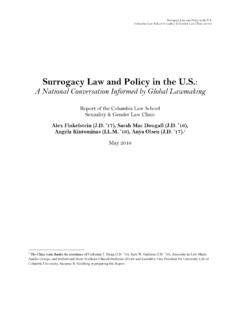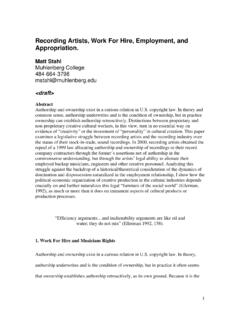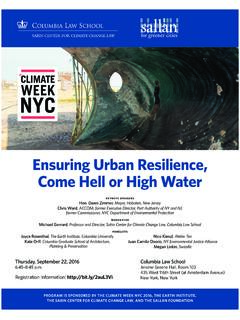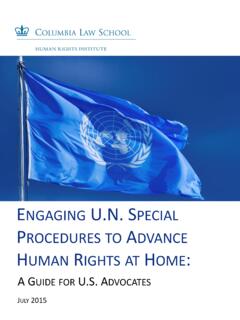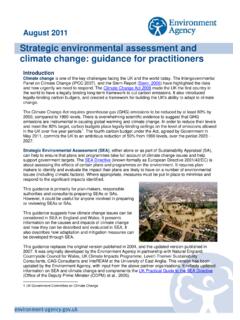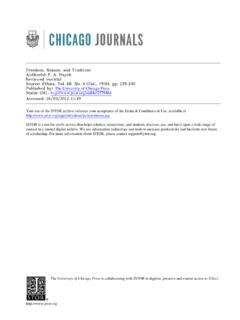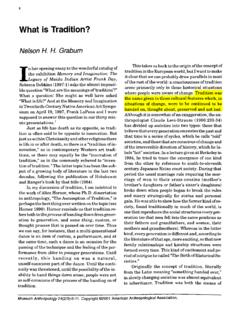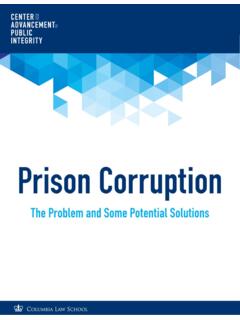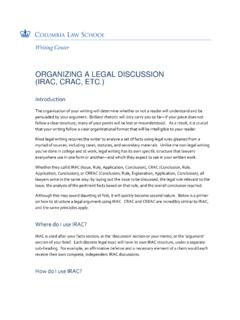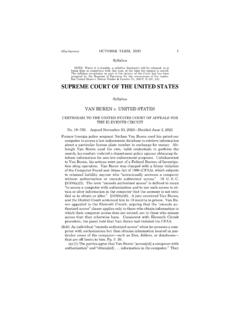Transcription of Case Study - Floyd v. City of NY - Columbia Law School
1 CASE Study : Floyd V. CITY OF NEW YORK RETRIEVED FROM: CATALYSTS FOR COLLABORATION URL: Photo by: Center for Constitutional Rights If organizations dedicated to litigation have a vision to change some part of world, then they need to build partnerships with others. They need to be accountable to the community and the individuals most affected by the problem they are trying to solve. Joo-Hyun Kang, Director of Communities United for Police Reform BACKGROUND Floyd , et al. v. City of New York, et al., was a landmark federal class action lawsuit that addressed the controversial stop-and-frisk policies of the New York Police Department. The case was the result of significant collaboration of multiple advocacy, legal, and community groups that challenged the racially motivated stop and search tactics of the police.
2 In August 2013, a federal judge held that New York City violated the Fourth Amendment of the Constitution which protects citizens from unreasonable searches and seizures and the Fourteenth Amendment which guarantees equal protection of all citizens under the law by systematically stopping innocent people in the street without any objective reason to suspect them of wrongdoing. The court called for a federal monitor to oversee broad reforms, including the use of body-cams on some patrol officers, and for a joint remedial process where stakeholders would collaborate to generate a plan forward. CASE CARD Name: Floyd , et al. v. City of New York, et al court : United States District court , Southern District of New York decision Date: August 12, 2013 Case Number: 1:08-cv-01034-SAS-HBP Judgment: Issue: The constitutionality of the stop-and-frisk policies of the New York Police Department FACTS Stop-and-frisk describes when a police officer temporarily detains someone based on a reasonable suspicion that the person is involved in criminal activity (the Stop ), and, if the officer reasonably suspects the person is armed and dangerous, pats down their outer clothing (the Frisk ).
3 A tactic in use by the New York Police Department (NYPD) for the past 50 years, stop-and-frisk was ramped up in the early 1990s and strongly impacted New York City s communities of color. Far more African-Americans and Latinos that whites were being stopped. The Floyd case built on a previous landmark racial profiling case Daniels, et al. v. City of New York, filed in 1999 after the killing of an unarmed African immigrant, Amadou Diallo, by the NYPD Street Crime Unit. A settlement won by the Center for Constitutional Rights (CCR) and others required the Police Department to provide CCR with stop-and-frisk data on a quarterly basis from 2003 to 2007. Analysis of the data found that the annual number of stops conducted by the NYPD increased by about 200 percent during those years, approximately 88 percent of which did not lead to evidence of a crime.
4 More importantly, approximately 85 percent of those stopped were black or Latino, while only 10 percent were white. After the community realized this pattern of violations and other non-compliance with the Daniels settlement, CCR and a team of 12 lawyers, in consultation with New York City-based police accountability groups, decided to file the class action lawsuit Floyd in 2008, arguing that the NYPD deliberately targeted young black and Hispanic men for stop-and-frisks, without objective reasons to suspect them of criminal behavior. The named plaintiffs in the case David Floyd , David Ourlicht, Lalit Clarkson, and Deon Dennis represented the million of New Yorkers who were stopped between 2004 and 2012.
5 The trial lasted nine weeks from March to May 2013, and over 100 witnesses testified. OUTCOME A federal judge ruled on August 12, 2013 that the stop-and-frisk practices violated the constitutional rights of minorities in the city. Judge Shira A. Scheindlin of the District court in Manhattan found that not only did the NYPD s tactics infringe on the plaintiffs Fourth Amendment rights, the Police Department utilized a policy of racial profiling to routinely stop blacks and Hispanics who would not have been stopped if they were white. This, she said, was a violation of the Equal Protection Clause of the Fourteenth Amendment. In her order, the judge recognized a number of reforms that needed to be immediately addressed, as part of an immediate reform process.
6 The order also called for a pilot program that required officers in at least five precincts across the city to wear body cameras to record street encounters as a potential tool for accountability. An independent monitor was appointed by the court to oversee reform of the NYPD s practices and bring them into compliance with the law. Most importantly, the judge ordered the initiation of a joint remedial process to solicit additional solutions from impacted New Yorkers on how the NYPD should further reform its practices to comply with the Constitution. The judge highlighted the importance of community input by writing that, no amount of legal or policing expertise can replace a community s understanding of the likely practical consequences of reforms in terms of both liberty and safety.
7 A court -appointed facilitator is currently guiding this joint remedial process, which involves community stakeholders, local elected officials, law enforcement representatives, ethnic and religious organizations, academics, NYPD officials and the Floyd plaintiffs. The decision was considered a major victory for the campaign and part of a larger process to hold the NYPD accountable. FEATURED ACTORS Baher Azmy | Legal Director, Center for Constitutional Rights Darius Charney | Senior Staff Attorney, Center for Constitutional Rights Joo-Hyun Kang | Director, Communities United for Police Reform Nahal Zamani | Advocacy Program Manager, Center for Constitutional Rights COLLABORATION The structure of the Floyd litigation stemmed from a distinct model of collaboration championed CCR.
8 The nonprofit organization was founded on a belief that lawyers have a modest role in campaigns to create social change. In CCR s view, lawyers should not only seek to address constitutional and human rights violations through impact litigation, but should also use the law as one of many tools that ultimately support the aspirations of existing political and social grassroots movements. In the Floyd case, a robust police accountability community had been building for several decades in New York, including several influential organizations working directly with communities impacted by police actions. These groups represented a spectrum of different socio-economic backgrounds, races, and religions.
9 The organizations ranged from grassroots, community-based organizations to academics, to well-funded legal and policy organizations. Realizing this, CCR and other NGOs together created Communities United for Police Reform (CPR) campaign in 2011 to serve as an umbrella organization for coordinating police accountability efforts in the City. CPR is currently comprised of over five-dozen organizations and is led by Joo-Hyun Kang, Director of CPR. Among its efforts, CPR has helped coordinate the work of litigators across the city, and uplift the political vision of impacted New Yorkers. This symbiotic effort proved to be a valuable undercurrent in the success of Floyd . Skills of attorneys are important, but it can t and doesn t replace community experience.
10 - Joo-Hyun Kang, Director of Communities United for Police Reform After years of advocacy, by 2013 stop-and-frisk had become a recognized phrase. CPR organized community education events and spoke regularly with journalists who reported on the political developments and challenges to this and other discriminatory and abusive police tactics. This all worked to generate mass public awareness, and ripened the environment for a high-profile lawsuit. Throughout the progress of the case, CPR s advocacy community served a crucial role. From the most granular levels of case-building, lawyers were swayed by input from the community. Before Floyd , lawsuits challenging stop-and-frisk focused on very narrow remedies for unconstitutional stop-and-frisk practices, such as re-training for officers and data collection.
